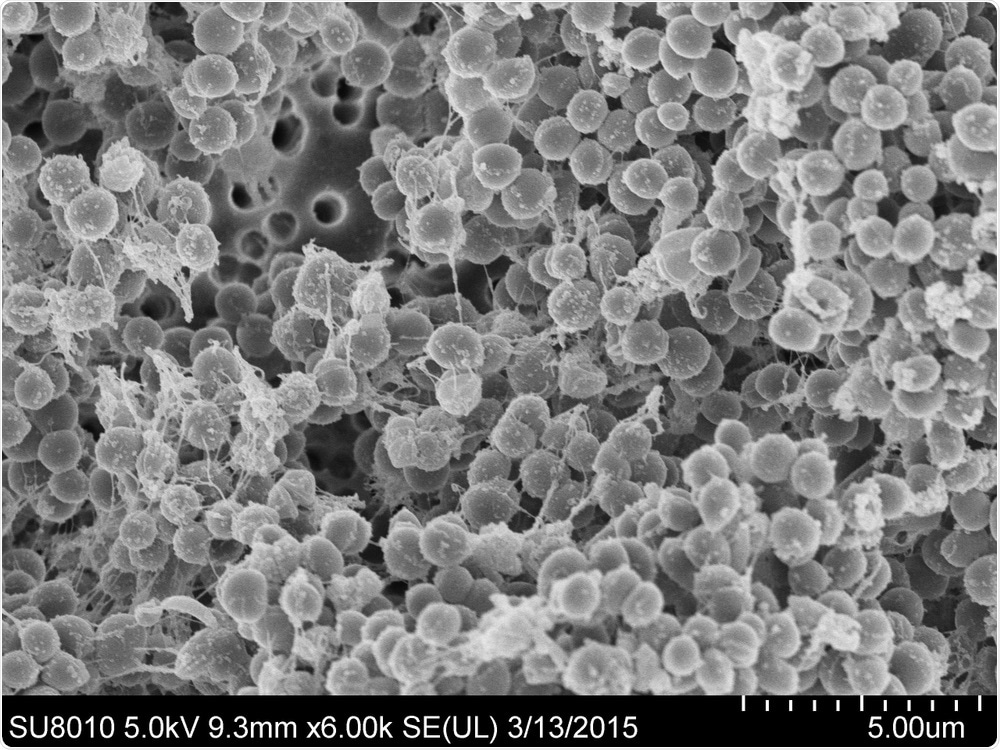Researchers from the University of Michigan Life Sciences Institute (LSI) have created a novel data-processing method that offers a simpler yet faster way to data produced by cryo-electron microscopy (Cryo-EM) instruments, thus making it possible to adopt this robust method at a wider scale.

Image Credit: Microspectacular/Shutterstock.com
With the help of Cryo-EM, researchers can ascertain the three-dimensional (3D) shape of various molecules including cellular proteins that have been flash-frozen in a thin ice layer.
Sophisticated microscopes direct high-energy electrons through this thin layer of ice while capturing an unlimited number of videos that are subsequently averaged to produce the molecule’s 3D structure.
By finding the molecules’ accurate structures, scientists can answer some of the crucial questions about the function of these molecules and how they play a role in human health and disease. For instance, cryo-EM was recently used by scientists to find out how a protein spike on the coronavirus allows it to penetrate into the host cells.
New developments in cryo-EM technology have quickly exposed this field to new users and have boosted the speed at which data can be obtained.
But in spite of these enhancements, scientists continue to face a major barrier in tapping the entire potential of this method—that is, the intricate data processing landscape required to convert the microscope’s terabytes of data into a 3D structure that can be readily used for examination.
But before the scientists can start examining the 3D structure they wish to analyze, they must first finish a set of preprocessing steps and make subjective decisions.
At present, these steps must be managed by humans—and since cryo-EM is used by scientists to study a large range of molecule types, researchers believed that it was almost impossible to produce a general set of guidelines that could be followed by all researchers to perform these steps, stated Yilai Li, a Willis Life Sciences Fellow at the LSI, which headed the development of the latest program.
If we can create an automated pipeline for those preprocessing steps, the whole process could be much more user-friendly, especially for newcomers to the field.”
Yilai Li, Willis Life Sciences, Life Sciences Institute, University of Michigan
With the help of machine learning, Li and his collaborators in the laboratory of LSI assistant professor Michael Cianfrocco have created one such pipeline. The new program has been described in a study published in the Structure journal on April 14th, 2020.
The latest program links many image-analysis and deep-learning tools with preexisting software data preprocessing algorithms to break down the huge data sets to the information required by scientists to start their analysis.
This pipeline takes the knowledge that experienced users have gained and puts it into a program that improves accessibility for users from a range of backgrounds. It really streamlines the process stage so that researchers can jump in and focus on what’s important: the scientific questions they want to ask and answer.”
Michael Cianfrocco, Assistant Professor, Department of Biological Chemistry, University of Michigan
Source:
Journal reference:
Li. Y., et al. (2020) High Throughput Cryo EM Enabled by User Free Preprocessing Routines. Cell Press. doi.org/10.1016/j.str.2020.03.008.